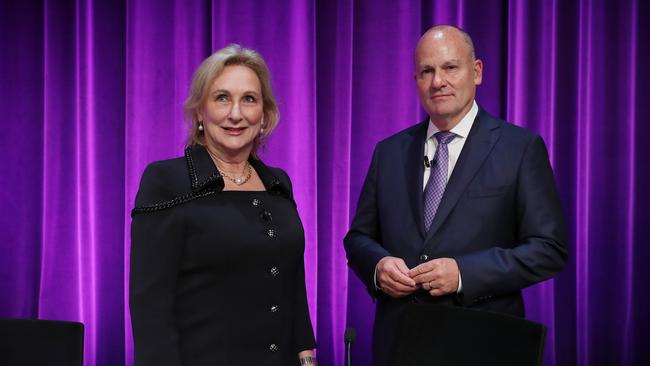Industry ‘not being set up to insure against pandemics’: IAG
Insurance Australia Group has sharpened its argument about the industry not being set up to insure against pandemics.

Insurance Australia Group has sharpened its argument about the industry not being set up to insure against pandemics, even as it committed to giving an update on the business interruption matter after the outcome of a test case.
At an annual general meeting on Friday, IAG chairman Elizabeth Bryan also withdrew support for raising the height of Warragamba Dam, citing “the probable loss” of Indigenous heritage sites and natural habitats.
She said while IAG would continue to support the need for flood-risk mitigation in the Hawkesbury-Nepean Valley in NSW to reduce risks to life and property, the company had pulled its support for raising the dam wall.
“Given our increasing awareness of the environmental and cultural heritage issues, I make the commitment that we will step back from advocating for a specific solution, including the raising of the Warragamba Dam wall,” she said.
The change in view from the company saw several resolutions removed from the AGM agenda ahead of Friday’s meeting.
Ms Bryan used her AGM speech to say the insurance sector was not “designed, structured, or capitalised” to cover systemic risks such as a pandemic, arguing IAG’s policies did not cover business interruption from COVID-19.
“This is where governments step in to act as that shock absorber, and we have seen our own federal government take on that role in a robust manner,” she added.
“ We know that a number of organisations are struggling as a result of the pandemic, and they are looking to their insurers as well as their government to support them ... we have provided support to businesses, but we are not able to step in and respond to all the issues they face as a result of the impact of COVID-19.”
But the topic has caused confusion and angst in the business community, and a landmark test case was filed in the NSW Supreme Court by the Australian Financial Complaints Authority and the Insurance Council of Australia in July. It is seeking to clarify disagreements around policy wording.
Ms Bryan stressed it was an issue IAG was “very alert” to.
“There is a legal case and there is probably not much more I can say to you until (we get) the results of that,” she said.
“We will then be able to interpret ... the results and will make a statement to the market and provide the information that’s required.” IAG also provided a September quarter trading update as part of the AGM materials.
Retiring CEO Peter Harmer said during the quarter IAG saw low single-digit gross written premium growth, despite adverse foreign currency impacts from New Zealand.
He noted that insurance profit for the quarter reflected the seasonally low incidence of natural disasters during the period, while underlying profitability was similar to the second half of last financial year.
“Within our underlying insurance margin, combined COVID-19-related effects have been broadly neutral during this period, with some benefit from lower motor claims frequency offset by incremental expense and provisioning impacts,” Mr Harmer said.
He outlined a strong capital position, above IAG’s target benchmarks, and noted that despite COVID-19 the company had confidence in the future given it has a “resilient business”.
Mr Harmer is passing the IAG CEO baton to Nick Hawkins on November 2.
Staff members used the AGM to ask questions over challenging enterprise bargaining negotiations.




To join the conversation, please log in. Don't have an account? Register
Join the conversation, you are commenting as Logout